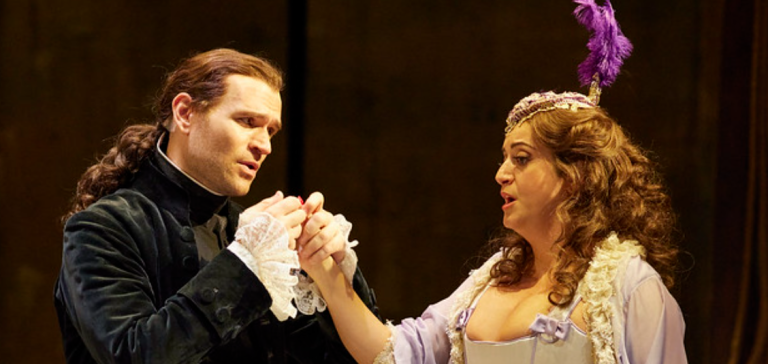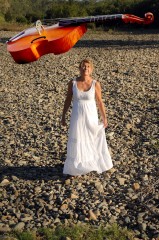CD Review: Pilgrimage to Montserrat/The Renaissance Players

It’s very likely that hundreds, if not thousands of Australians have retraced the legendary journeys undertaken by medieval pilgrims to sacred sites in the Iberian peninsula. The shrine of St James the apostle, Santiago de Compostela in Galicia and the Benedictine monastery of Santa Maria at Monserrat near Barcelona, have held a lasting fascination for travellers, be they sacred or secular.
Travelling to these sites by foot is arduous – the Camino de Santiago is 500 miles long; the monastery at Montserrat sits at an elevation of 720 metres. Today travellers are no doubt hooked up to their iPods and social media for amusement as they walk unlike their medieval counterparts who had to make their own entertainment.
It is this entertainment that early music specialist, Winsome Evans BEM, OAM, has researched and recreated on disc, with her ensemble The Renaissance Players. The 2 CD set, titled Pilgrimage to Montserrat has been released on the Tall Poppies label (TP 229). On it are 18 songs and instrumental items centred around the ten pilgrim songs (Cants del Romeus) from the Llibre Vermell (The Red Book), a set of music manuscripts dating from the 14th century, discovered in 1806 and held in the monastery at Monserrat. The manuscript is named after it’s red velvet cover which was created in the late 19th century.
The Llibre Vermell is one of the three most important sources of medieval Spanish polyphony to survive today. The other two being the 12th-century Codex Calixtinus, from the shrine of St James of Compostela and the early 14th-century Huelgas Manuscript from the convent of Las Huelgas, near Burgos. To give an idea of the style of music at the time, the ten pilgrim songs from the Llibre Vermell include four monophonic songs and six pieces of polyphony of which several are dance-songs.
As there was no separate accommodation for the pilgrims Montserrat, they slept in the church where they were not permitted to sing secular songs. Their Cants del Romeus performed during the night vigil replaced the traditional songs and dances. Fittingly, they have a folkloric feel. The original words were replaced with religious lyrics and the melodies used were a fusion of Spanish traditional tunes and musical influences from different European regions brought by the pilgrims.
Winsome Evans has gathered a formidable array of early instruments and specialists in their performance to create this medieval soundscape. The choir comprises 10 SATB voices; the 9 instrumentalists amongst them, play more than 2 dozen pitched and percussion instruments, including treble and alto shawms, harp, gittern, mandora, strohfiedel, chitarra moresca and castanets, to list a few. Winsome Evans herself turns her hand to less than 15 instruments.
The album is also a dedication to the life and work of filmmaker Robin Anderson whose prizewinning final documentary, Facing the Music, (2001) depicted the dramatic financial struggles inside the halls of Sydney University’s Music Department, birthplace of the Renaissance Players.
Fittingly, the recording opens and closes with a dedication to Robin Anderson based on an aeolian melody. The newly composed section of three part polyphony is exquisitely sung by sopranos Belinda Montgomery, Avigail Herman and Emma Stacker with Winsome Evans playing the gemshorn and Nick Evans the rebec.
The music on this recording is a melting pot of plainchant, infectious dances and clapping, exotic orientalism, and irresistible multi-metered rhythms, syncopation and hemiolas. The ancient modes feature prominently. Many songs are homophonic with the choir singing in unison; the harmonic colour is provided by rounds like the Laudemus Virginem, (track 4, CD 1) where the male voices chase each other around a nine note theme and the duct flute played by Winsome Evans, provides a counter melody high above the singers. Given the relative simplicity of the harmonic language, the rhythms are surprisingly complex.
Both as an ensemble and as soloists, the singers engage the listener with their vibrance. They sing as ordinary people would, evoking a sense of rustic simplicity. The glossy sound that they might produce in the concert hall is replaced with an altogether arcadian style resounding with joyful ululations, microtonic inflexions and embellishments.
Pilgrimage to Montserrat comes with a 40 page booklet containing the full texts to the songs, their translations and numerous illustrations. As well, Winsome Evans has provided an extraordinarily detailed erudite analysis of the music and the words, as well as writing about the pilgrims, the dances and other aspects of her research.
This is a recording that is valuable at several levels. For those with a scholarly interest in medieval music, it contains a substantial amount of comprehensively researched information and the music is a carefully considered recreation; for those who knew and admired Robin Anderson, it is a dedication.
Above all, it contains a wealth of fine performances and is a pleasure to listen to.
Shamistha de Soysa for SoundslikeSydney©
.







